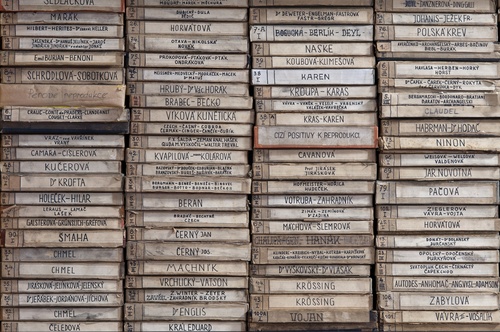The most striking loss, which had an impact on the Czech cultural heritage, was the destruction of the huge company archive of glass negatives. In the winter of 1951/52, all the glass negatives were first placed on wheelbarrows and then dumped into waiting lorries and taken to a landfill site in Kyje, a Prague suburb. The portraits of important figures, well-known and lesser-known, were soon turned into tons of glass shards.
Langhans House
Since 1880, the house at No. 37 Vodičkova ulice, Prague, has been linked with photography. It is named after Jan Langhans, an important Czech portraitist.
- Jan Langhans (1851–1928), a photographer, was the founder of Ateliér Langhans, a portrait studio.
- Ateliér Langhans, from its founding in 1880 till its nationalization in 1948, was the largest photography business in Bohemia.
- The Langhans Archive contained almost two million negatives in the 1930s.
- The Gallery of Eminent People was Langhans’s selection of negatives of portraits of important people.
- Nationalization: in 1948, Ateliér Langhans was nationalized and its whole archive was taken away to be destroyed.
- Restitution: in 1991, the building in which the studio had been located was returned to Jan Langhans’s heirs.
- A discovery: during the remodelling of the building, more than 9,000 glass negatives from the Gallery of Eminent People were discovered in two cupboards.
- The Langhans Prague Foundation: to preserve the collection, the negatives have been deposited in the foundation.
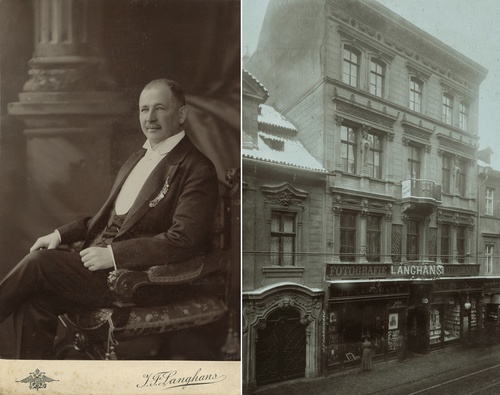
Jan Langhans (1851–1928) was trained in food chemistry, but his real interest was in photography. In 1876 he opened a very modest first studio, in the town of Jindřichův Hradec, south Bohemia, and worked there in the summer months. Four years later, in 1880, he moved to Prague, where, in Vodičkova ulice, he opened a portrait studio. It soon became the largest photographic business in Bohemia.
Ateliér Langhans was famous for technical innovation, craftsmanship, a fine sense of aesthetics, and striking marketing. Jan Langhans was the Chairman of the Bohemian Photographic Society, and participated in national and international exhibitions. He received a number of awards and decorations (for example, from the Shah of Persia and the King of England). In 1919, he put his daughter and her husband in charge of the business. He died in 1928.
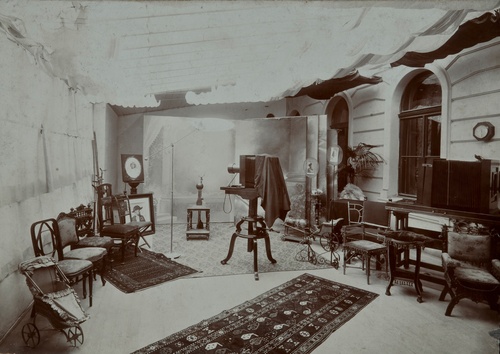
The company archive. As long as Langhans was in business, all the negatives of the portraits were saved and catalogued. For decades, clients could have prints made not only of themselves, but also of their forebears. On the basis of this careful archiving, almost two million negatives, mostly on glass, had been saved by the eve of the Second World War. This was the largest photographic Bohemian archive of its time. And that is one reason its destruction in 1951/52 has meant such a great loss to the national heritage.
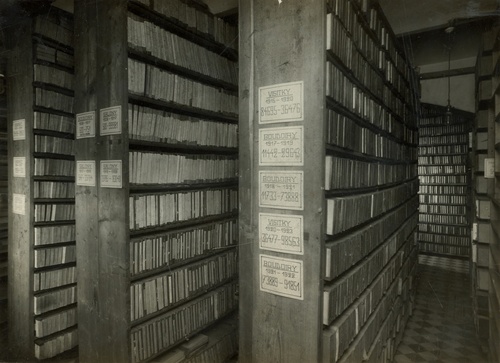
During the first two decades of its existence, Ateliér Langhans became the most frequented studio for photographic portraits in Bohemia. From its founding in 1880 until its destruction after 1948, the huge company archive of negatives was made by carefully selecting portraits of important figures. Langhans called this selection the Gallery of Eminent People (Galerie osobností). The unique archive was organized into different categories depending on the profession of the sitters: actors and singers, politicians, writers, judges and businessmen, artists, musicians, scholars and scientists, and foreigners in Bohemia. This collection was the pride of the studio and a great record of the élite of the nation.
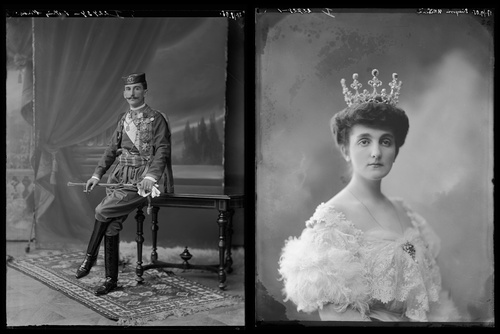
After the Communist takeover in February 1948, a public ordinance came into effect on the creation of cooperatives, under which Ateliér Langhans was nationalized. House no. 37 in Vodičkova ulice, including its management and studio equipment, was placed in the hands of the state-run Komunální podnik (Communal Business), later called Družstvo Fotografia (Photography Cooperative).
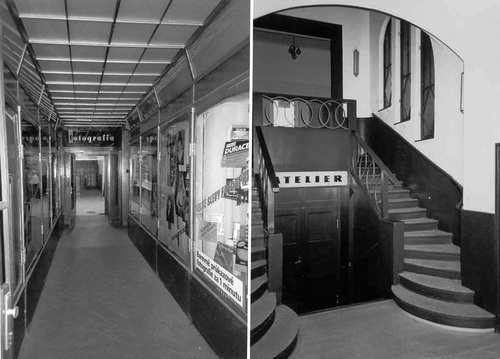
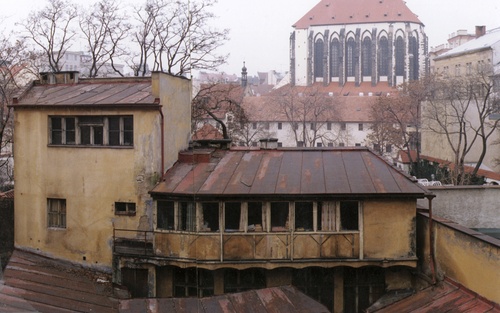
After the great changes in Czechoslovakia, which began with the Velvet Revolution in late 1989, legislation was passed for the restitution of at least some nationalized property to its rightful heirs. In this way, the house in Vodičkova ulice, Prague, was returned to the descendants of Jan Langhans, the Meisner-Wismer family. As in other similar cases, this was a property that had been left to fall into serious disrepair during the forty years of Communist rule. In 2001/02, led by the architect Ladislav Lábus, the building was thoroughly renovated and remodelled. Located on its ground floor and in the basement, Centrum FotoŠkoda carries on the photographic tradition of Langhans and has become an essential centre for amateur and professional photographers.

During the renovation and remodelling of the house, workers on the site discovered, in 1998 and 2000, two cupboards containing more than 9,000 glass negatives of the Gallery of Eminent People. The discovered boxes, most of which are 18 × 24 cm, had been labelled with a system of roman and arabic numerals and the names of the people whose portraits had been placed in them. The roman numerals indicate the group of professions, the arabic indicate the number of boxes in the individual categories. This precise system shows the size of the discovery and also indicates the magnitude of the loss that the Gallery of Eminent People suffered.
The first part of the prints which the photographer Ivan Lutterer (1954–2001) had made from the original negatives was presented at an exhibition in the Galerie Rudolfinum, Prague, in 2000, and met with great interest from the public.
Despite its incompleteness, the discovered Langhans archive is unique. The thousands of faces show the appearance of the sitter, including his or her expression, the fashions of the period, and the photographic techniques. The Gallery of Eminent People is also evidence of Prague’s having been an important crossroads in those years. The discovered part of the archive contains a mixture of portraits of Czechs, who were often active beyond the frontiers of the country, and also foreigners who lived and worked here, or were simply visiting. In a natural way, the collection thus provides evidence of the former importance of the Bohemian Lands in Europe. It is increasingly becoming a fascinating testimony to the Czech past.
In view of the historical and symbolic importance of the discovered part of the archive, the Langhans Prague Foundation was established in 2003, at the initiative of the heirs, the Meisner-Wismer family.
The task of the foundation is to preserve the archive that has been entrusted to it, and to catalogue, restore, and gradually make it accessible to the general public.
Communist arbitrary rule sought to destroy the historical memory of the nation, and therefore portraits of its élite. The accidental discovery of a part of the Langhans Gallery of Eminent People constitutes the restoration of historical continuity and is an important step towards the confirmation of that continuity. By placing the negatives in care of the Langhans Prague Foundation, at least part of the archive remains preserved as a whole for future generations.
